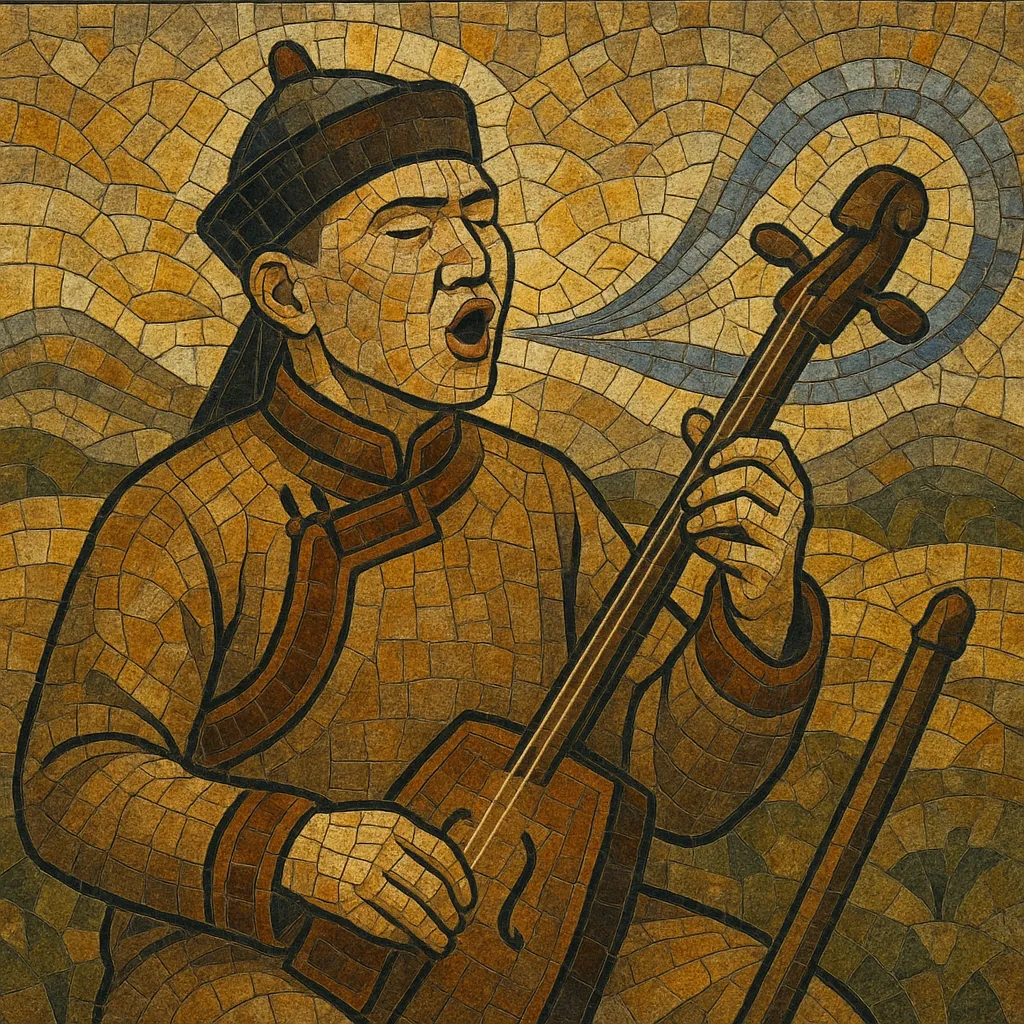Mongolian throat singing (höömii) is a traditional overtone-singing art in which a vocalist produces a low, sustained fundamental drone while shaping the mouth and throat to amplify specific overtones, making two or more pitches audible at once. The result is an otherworldly, flute-like melody floating above a deep, stable tone.
Rooted in the nomadic herding culture of Mongolia, höömii is closely tied to the natural soundscape of the steppe—wind, rivers, and animal calls—often imitated in timbre and phrasing. Distinct Mongolian styles include kharkhiraa (a growling undertone beneath the drone) and isgeree khöömii (a whistling-overtone style), among others categorized by the primary resonance area (throat, chest, palate, nasal cavity).
Performances range from intimate solo pieces to ensemble settings with morin khuur (horsehead fiddle) and tovshuur (lute), and appear in ritual, celebratory, and concert contexts. The practice emphasizes breath control, resonance, and subtly shifting vowel shapes rather than conventional harmonic progressions.
Höömii is widely believed to have emerged among Mongolian pastoralists in the high steppes and Altai regions, where singers sought to echo and commune with nature’s sounds. Oral histories and clan traditions place the practice centuries back, and references to unusual throat techniques in the Mongol court era suggest a medieval pedigree.
Through the 20th century, höömii moved from strictly local contexts into professional ensembles and state theaters. Radio and early recordings in the mid-1900s helped codify techniques and repertory. Regional styles—particularly those associated with western Mongolia (e.g., Chandmani)—gained national visibility, and master-apprentice lineages continued to transmit precise methods of tone production, breathing, and repertoire.
In the late 20th and early 21st centuries, tours, recordings, and collaborations with world and experimental musicians brought Mongolian throat singing to international audiences. In 2010, UNESCO inscribed “Mongolian art of singing, khöömei” on the Representative List of the Intangible Cultural Heritage of Humanity, reinforcing preservation and pedagogy efforts both in Mongolia and across the Mongolian diaspora.
Contemporary ensembles blend höömii with morin khuur orchestras, folk-rock, and even metal, while soloists continue to refine classic styles. Conservatories, cultural organizations, and community mentors sustain apprenticeships, and educational materials have broadened access—yet mastery still rests on embodied, long-term practice.


